![]()
![]()
![]()
Use LEFT and RIGHT arrow keys to navigate between flashcards;
Use UP and DOWN arrow keys to flip the card;
H to show hint;
A reads text to speech;
27 Cards in this Set
- Front
- Back
|
Native Weeds |
Plants that have historic organs in the area and we're not introduced by humans |
|
|
Introduced plants |
Came from other parts of the country or world through activities of humans |
|
|
How weeds spread |
People, Wind, Water, mammals, birds and humans |
|
|
Seeds that evolve to travel |

|
|
|
Grass seedling have only one leaf when they emerge from the ground, therefore they are called. |
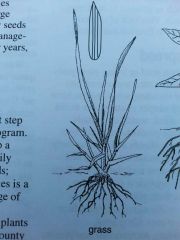
Monocotyledons |
|
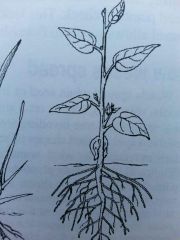
What plant is this |
Broadleaf |
|
|
Herbaceous Broadleaf |
Plants die back to the ground each winter |
|
|
Broadleaf seedlings have two cotyledons (first leaves) and therefore are called...? |
Dicotyledons |
|
|
Sedges are? |
Perennial plants with trianglar, joints stems and narrow, Grassley leaves |
|
|
Rushes are monocotyledonous |
grasslike plants that are common in marshy or wet areas |
|
|
Woody plants |
Form wood and do not die during the winter. Brush, shrubs and trees |
|
|
Summer Annuals |
Green and yellow foxtail Puncturevine Russian thistle Crabgrass Kochia Common lambsquarters |
|
|
Winter Annuals |
Tumble mustard Downy brome Shepherdspurse |
|
|
Life cycle of annuals |
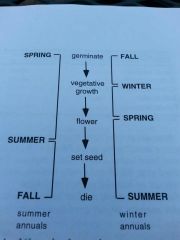
|
|
|
Annuals |
Complete there life cycle in less than 1 calender year |
|
|
Summer Annuals |
Plants germinate in spring or summer |
|
|
Winter Annuals |
Plants germinate in the late summer to early winter |
|
|
Common biennieals |
Tansy ragwort Common mullein Common Burdock bull thistle poison hemlock |
|
|
Biennials |
Plants complete their life cycle within 2 years |
|
|
Perennials |
Live more than 2 years and some may live indefinitely. Persistent roots |
|
|
Simple perennials |
Propagate and spread primarily by seed |
|
|
Creeping perennials |
Reproduce primarily by vegetative propagation creeping Roots creeping stolons or creeping rhizomes |
|
|
Common perennials |
Simple Common dandelion Curly dock Buckhorn plantain Broadleaf plantain Dalmatian toadflax Pokeweed Creeping Leafy spurge Field bindweed Canada Thistle Bermudagrass Johnsongrass Quackgrass Yellow nutsedge |
|
|
Rhizome or creeping roots |

|
|
|
Stolon |
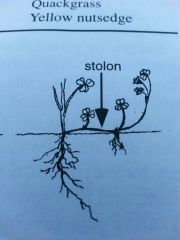
|
|
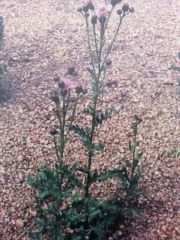
What plant is this? |
Canada thistle is a creeping perennial reproduce by seeds and horizontal routes that may exceed as long as 12 feet |
|
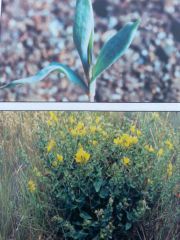
What plant is this? |
Dalmatian toadflax Grows from a single a stem branching above the middle of the plant |

